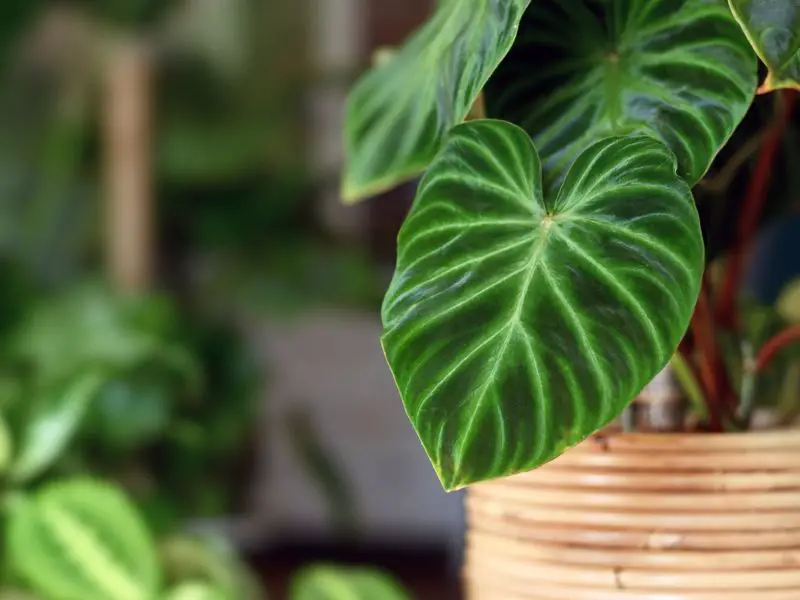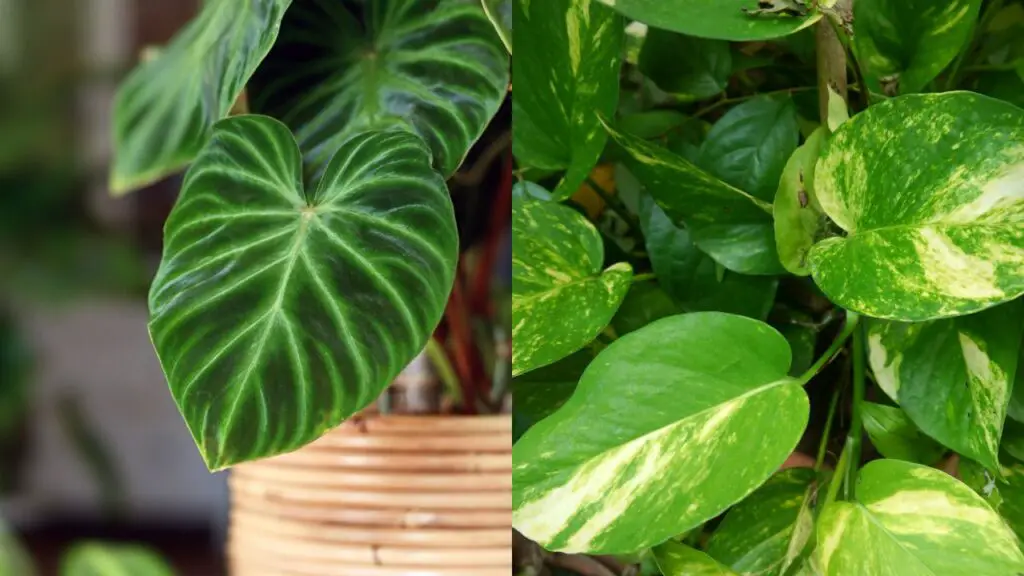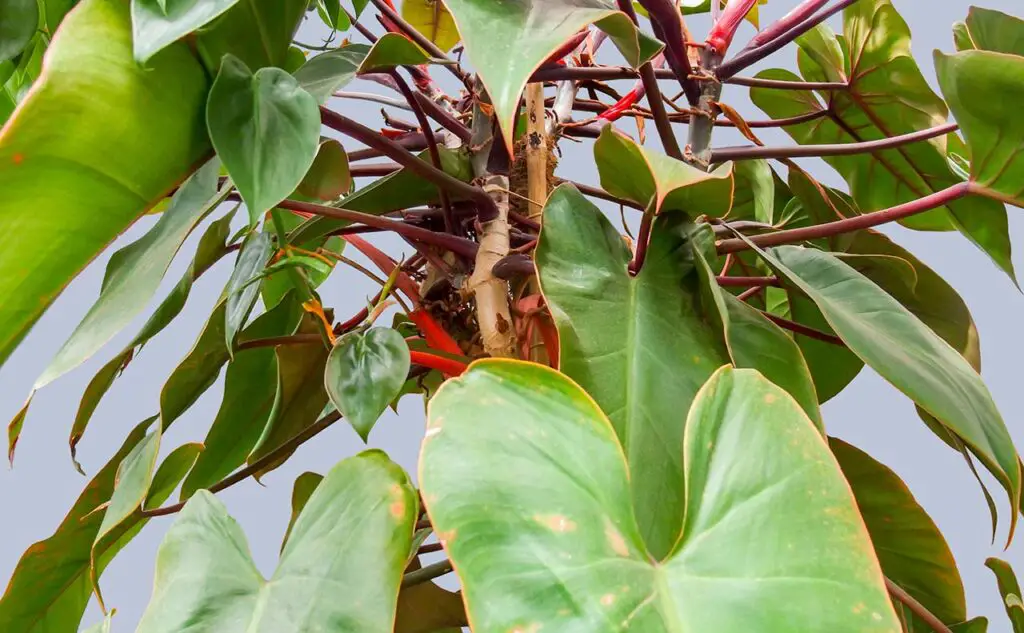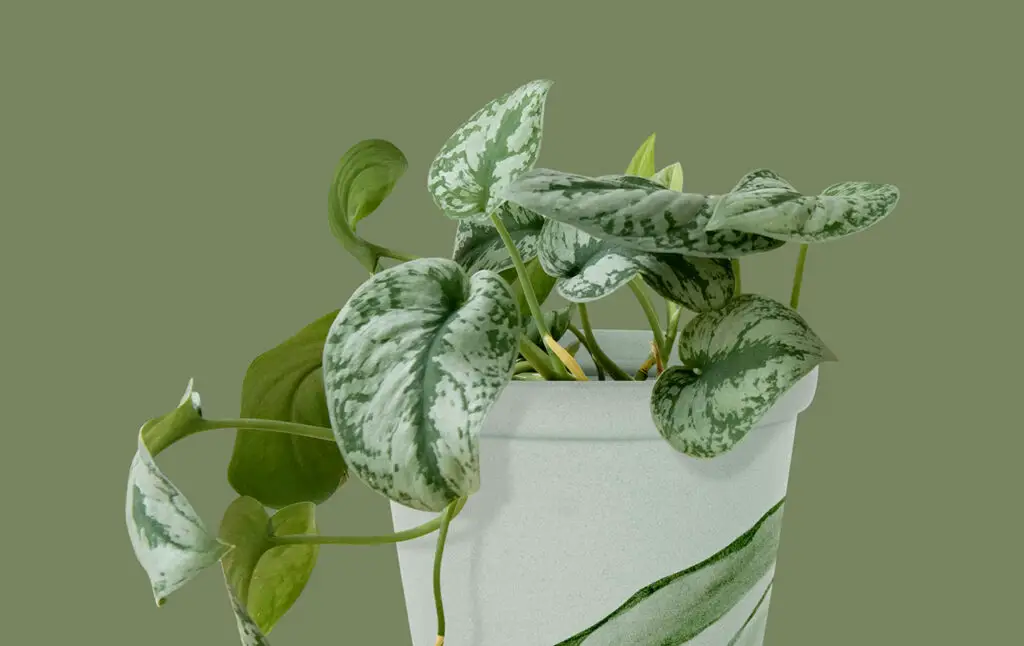Philodendron vs Pothos: Spotting the Differences
Philodendrons and Pothos are two popular indoor plant superstars that have caused more mix-ups than a swapped name tag at a garden party.
You see, Philodendrons and Pothos, they’re like those twins in school that everyone kept confusing, but once you got to know them, you wondered how you ever mixed them up.
They’re both lush, vibrant, and absolutely perfect for jazzing up your living space.
But knowing the difference between them? That’s a game-changer, my friends.
Why, you ask? Well, besides the fact that it’s pretty embarrassing to call your Philodendron a Pothos at the next plant lovers meetup, these two plants have slightly different needs.
And if there’s one thing I’ve learned in my years of plant parenthood, it’s that understanding your plant is the first step to helping it thrive.
Get this right, and you’ll have happy, healthy plants that are the envy of your neighborhood.
Key Takeaways on Differences
- Leaf shape: Philodendrons usually have heart-shaped, glossy leaves, while Pothos have elongated leaves with a slight wave and tiny “fenestrations” near the leaf stem.
- Growth habits: Both plants love to vine and climb, but Pothos are typically more aggressive in their growth.
- Care requirements: Both plants are easy-going and adaptable, but Pothos are a bit more tolerant of neglect and can handle lower light and less frequent watering.
- Propagation: Both plants can be propagated from stem cuttings, but Philodendrons need a node, while Pothos need a root node for successful propagation.
- Common misconceptions: Not all vining plants with heart-shaped leaves are Philodendrons, and not all variegated plants are Pothos. It’s all in the details, folks!
- Care tips: Both plants enjoy bright, indirect light and watering when the top inch of soil dries out. Watch out for pests and prune as needed to encourage bushier growth.
Get To Know Philodendrons

Originating from the tropical regions of the Americas and the West Indies, these beauties have been making indoor gardeners swoon for centuries.
There’s a wild variety of Philodendrons out there – we’re talkin’ around 500 species.
From the trailing heartleaf Philodendron (Philodendron hederaceum) that loves to hang around, to the majestic Philodendron ‘Pink Princess’ with its eye-catching variegated leaves, there’s a Philodendron for every plant lover.
Now, when it comes to their care, Philodendrons are pretty chill.
They enjoy bright, indirect light, but can hang in lower light conditions too.
They’re not too fussy about their soil as long as it’s well-draining.
When it comes to water, wait till the top inch of soil is dry before giving them a drink.
What makes Philodendrons stand out in the crowd? Well, it’s their glossy, often heart-shaped leaves.
Depending on the variety, these can range from bright green to rich burgundy, and some even sport amazing variegation.
Plus, they’ve got these cool aerial roots that they use to climb up trees in their natural habitat.
In your home, these roots will happily attach to a moss pole, turning your Philodendron into a real eye-catcher.
Get To Know Pothos

Also known as Devil’s Ivy, this vining plant originates from the lovely islands of French Polynesia.
Despite the devilish nickname, Pothos are far from scary. In fact, they’re some of the most forgiving and easy-to-grow houseplants out there.
There’s a Pothos variety for every mood and taste. You’ve got the golden Pothos (Epipremnum aureum) with its charming variegated leaves, the neon Pothos with leaves so bright they’ll light up any room, and the silvery satin Pothos (Scindapsus pictus), to name a few.
When it comes to their care, Pothos are about as low-maintenance as it gets.
They’ll happily hang out in anything from low light to bright indirect light. They’re not picky about their soil either – just make sure it drains well.
And watering? Easy peasy. Just like Philodendrons, wait for the top inch of soil to dry out before watering.
So, what makes Pothos unique? It’s their fast-growing, trailing vines that can reach lengths of up to 10 feet indoors.
It’s their stunning leaf variegation, which can range from creamy white to bright gold, depending on the variety.
And it’s their resilience, making them an ideal choice for newbie plant parents or those of us with less-than-green thumbs.
Key Differences Between Philodendrons and Pothos
At first glance, Philodendrons and Pothos may seem like two peas in a pod, but there are some distinct differences that’ll help you tell ’em apart.

Leaf Shape and Size
Philodendrons, especially the heartleaf variety, have leaves that are, well, heart-shaped.
They’re smooth and glossy, and they’re typically a bit larger than Pothos leaves.
Pothos, on the other hand, have leaves that are more elongated and sometimes slightly wavy.
Plus, they’ve got these tiny little holes, or “fenestrations,” near the leaf stem that Philodendrons don’t have.
Growth Habit
Both plants love to vine and climb, but Pothos tend to be more aggressive in their growth.
Leave them be, and they’ll quickly take over a space.
Philodendrons, though? They’re a bit more laid-back. They’ll still trail and climb, but they don’t have quite the same speed as Pothos.
Care and Maintenance
When it comes to care, both plants are pretty chill.
But if we’re nitpicking, Pothos are a smidge more tolerant of neglect.
They can handle lower light and less frequent watering better than Philodendrons.
That said, both plants will let you know if they’re unhappy.
Yellow leaves? You’re probably overwatering. Brown leaves? They might need a bit more humidity.
Propagation
Both plants can be propagated from stem cuttings, but there’s a slight difference in the process.
For Philodendrons, you’ll want a node – that’s a little bump on the stem where new growth happens.
For Pothos, you’re looking for a root node, which looks like a brown stub on the vine. Snip there, pop your cutting in water, and wait for roots to grow.
Common Mistakes When Identifying Philodendrons and Pothos
Even the most seasoned plant lovers can get tripped up when trying to tell Philodendrons and Pothos apart.
Both plants are vining, they both have glossy leaves, and they both make you look like a total plant pro.
But there are a few common misconceptions that can lead to some awkward plant ID mix-ups.

One biggie is thinking that all vining plants with heart-shaped leaves are Philodendrons.
Nope, not the case. Remember, Pothos have heart-shaped leaves too, but they’re more elongated and often have a bit of a wave to them.
Another common misstep is getting bamboozled by variegation.
It’s easy to see a variegated plant and automatically think it’s a Pothos, but hold your horses.
Philodendrons can be just as flashy. Take the Philodendron ‘Pink Princess’ or the Philodendron ‘Brasil’, for example.
They’ve got variegation that can give any Pothos a run for its money.
So, how can you avoid these identification issues? Well, the devil’s in the details, my friends.
Look at the leaf shape and texture, check out the growth pattern, and take note of any unique features like the tiny holes, or “fenestrations,” near the leaf stem in Pothos.
Tips for Growing and Caring for Philodendrons and Pothos
Whether you’re a newbie plant parent or a seasoned green thumb, these tips and tricks will help your Philodendrons and Pothos thrive.

Starting with Philodendrons, remember they’re pretty easy-going.
They enjoy bright, indirect light, but they can also tolerate lower light conditions.
Just avoid direct sunlight — it can scorch their leaves. When it comes to watering, let the top inch of soil dry out between drinks.
Overwatering is a big no-no — it can lead to root rot.
And if you notice the leaves turning yellow, it might be a sign you’re being a bit too generous with the H2O.
Moving on to Pothos, these guys are also fans of bright, indirect light, but they’re even more tolerant of low light than Philodendrons.
For watering, it’s the same drill — let the top inch of soil dry out before watering.
And remember, Pothos are tough cookies.
They can bounce back from a bit of neglect, so don’t stress too much if you forget a watering day… or three.
Now, what about potential issues? Both Philodendrons and Pothos can fall prey to the usual houseplant pests like spider mites, aphids, and mealybugs.
If you notice tiny bugs or a sticky residue on your plants, it’s time to take action.
Wipe the leaves with a soapy water solution and consider using a natural insecticide if the problem persists.
Another issue can be leggy growth — that’s when your plant starts looking more like a viney monster than a lush, full houseplant.
If this happens, it might be time for a trim. Pruning will encourage bushier growth and keep your plant looking its best.